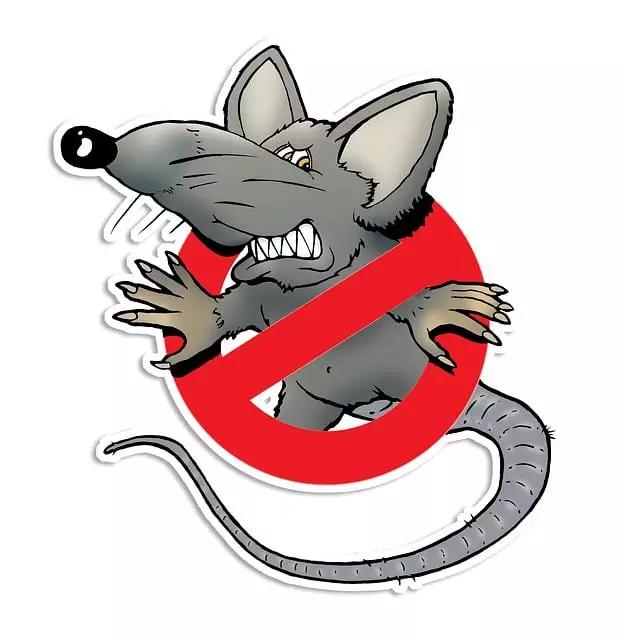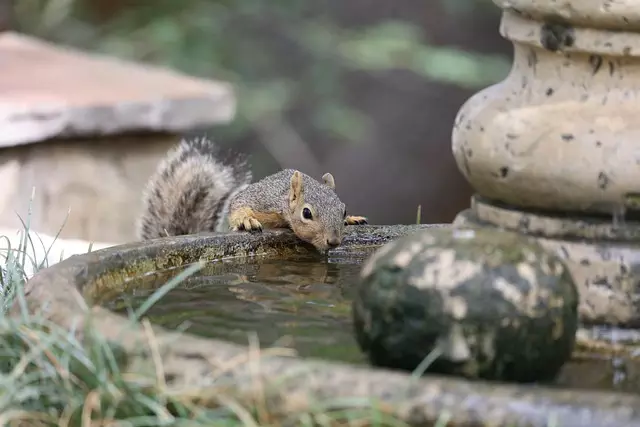Rodent infestations pose significant risks to homes and businesses, requiring timely intervention. Recognize signs like unusual noises, droppings, gnaw marks, and smells for early detection. Preventative measures include sealing entry points, practicing proper sanitation, and addressing structural damage through regular inspections. Modern rodent control strategies emphasize safety and sustainability, employing Integrated Pest Management (IPM) techniques like live traps, sealed entry points, and non-toxic baits. DIY methods, professional services, and ecological alternatives are available, with the latter focusing on natural repellents and promoting biodiversity to maintain community health and environmental balance.
Rodent infestations can quickly turn into a home or business owner’s worst nightmare. Understanding signs, causes, and types of rats is crucial for effective rodent control. This comprehensive guide delves into various extermination methods, from traditional to modern techniques, including DIY tips and safe, humane removal practices. We explore prevention strategies, the environmental impact of rat eradication, and when to call in professional pest control services for robust and eco-friendly rodent control solutions.
Understanding Rodent Infestations: Signs and Causes

Rodent infestations can quickly turn into a serious problem for homes and businesses, leading to significant damage and health risks. Understanding how to recognize signs of an infestation is crucial for effective rodent control. Common indicators include unusual noises like scurrying or clicking sounds, visible droppings in dark corners or along walls, gnaw marks on food packaging or structural wood, and distinct smells. Rodents are attracted to sources of food, water, and shelter, often finding their way into buildings through cracks, holes, or uns sealed entry points.
Identifying the cause of an infestation is essential for successful prevention. This may involve evaluating the property for potential entry points, ensuring proper sanitation practices, sealing off access areas, and addressing any existing structural damage. Regular inspections, especially in areas prone to pest activity, can help detect issues early on, making rodent control measures more effective and less invasive.
Types of Rats: Recognizing Your Invaders

Rats are a common pest problem, and understanding their types is crucial for effective rodent control. There are several species of rats, but the two most prevalent invaders in residential areas are the Norway rat (Rattus norvegicus) and the roof rat (Rattus rattus).
The Norway rat is larger and more robust, typically growing up to 9-10 inches long, including its tail. They have brown or grey fur, and their tails are smooth and scaly. These rats are excellent climbers and often enter homes through drain pipes, sewer systems, or gaps in walls. Roof rats, on the other hand, are smaller, measuring around 6-8 inches in length, with smoother, darker fur and a preference for higher places like attics, walls, and trees. Recognizing these differences is essential as it aids in implementing targeted rodent control measures tailored to each species’ behavior and habitat.
Traditional vs. Modern Extermination Methods

In the realm of rodent control, the methods employed have evolved significantly over time. Traditional techniques often relied on toxic chemicals, which, while effective, posed significant health and environmental risks. These methods would involve laying traps or dousing areas with poison, a practice that has largely fallen out of favor due to concerns over secondary poisoning and ecological disruption.
Modern extermination methods, on the other hand, offer safer and more targeted approaches. Integrated Pest Management (IPM) strategies focus on prevention and non-toxic solutions like sealing entry points, maintaining cleanliness, and using live traps or specialized baits. These contemporary techniques prioritize minimizing harm to both humans and wildlife, reflecting a growing awareness of sustainable practices in pest control.
DIY Rat Control: Tips and Traps

Dealing with a rat infestation can be a daunting task, but there are DIY methods to take control. Before resorting to professional help, consider implementing some simple yet effective rodent control strategies. One popular approach is setting up traps, which can be bought or made at home using materials like wooden blocks, cheese, or peanut butter as bait. Place these traps in areas where rats have been spotted, ensuring they are out of reach for pets and children.
Another tip for DIY rat control is to seal entry points. Rats can squeeze through tiny gaps, so inspect your property for any holes or cracks and fill them with steel wool or concrete. Additionally, keeping your home clean and tidy, storing food in airtight containers, and removing potential water sources will make your space less appealing to these intruders.
Safe and Humane Rodent Removal Techniques

When dealing with rodent infestations, it’s crucial to employ safe and humane removal techniques that ensure the well-being of both your family and the animals. Traditional methods often involve toxic chemicals or lethal traps, which can pose significant risks. Opting for non-lethal alternatives is a more responsible approach to rodent control. One effective method is using live traps, designed to capture rodents without harming them. These traps are baited with food, luring the rodents inside where they are safely contained for subsequent release in an approved area, ideally far from residential properties.
Additionally, there are mechanical and natural repellents that can deter rodents without causing them harm. Steel wool or concrete mesh can be used to seal entry points, preventing rodents from gaining access to buildings. Natural repellents like peppermint oil, cloves, and cayenne pepper can also be effective, as their strong odors are unpleasant to rodents. Employing these safe and humane techniques not only helps control rodent populations but aligns with a more environmentally conscious approach to pest management, contributing to a healthier ecosystem.
Preventing Future Infestations: A Comprehensive Guide

Preventing future rodent infestations requires a multi-faceted approach known as rodent control. It begins with understanding where and why rodents might be attracted to your property in the first place. Common entry points, such as cracks, gaps, or open doors/windows, should be sealed using weatherproof materials. Regularly cleaning and storing food items securely can significantly deter rodents, as they are driven by scent trails of food sources.
Moreover, maintaining a clean environment, particularly in areas where food is prepared or stored, is crucial for rodent control. Grass, leaves, and other debris around the property should be regularly removed to minimize hiding places. Additionally, addressing any moisture issues, like leaky pipes or standing water, is essential, as rodents are drawn to such environments for both hydration and nesting.
Professional Pest Control Services: When to Call Experts

Dealing with a rodent infestation can be stressful and unsanitary, making it crucial to know when to call in professional pest control services for effective rodent control. While DIY methods may seem appealing for cost-saving purposes, professional exterminators offer specialized knowledge and advanced equipment that can efficiently address the issue. Experts in rodent control understand the behavior and habits of various rodents, enabling them to identify entry points and deploy targeted treatments without causing harm to your family or pets.
Hiring professionals is especially recommended when dealing with severe infestations, as they have access to a range of powerful yet safe pesticides and repellents. Moreover, reputable pest control services provide long-term solutions by offering ongoing inspections and maintenance plans, ensuring that your property remains rodent-free for an extended period. By entrusting the task to experts, you can save time, avoid potential health risks associated with improper chemical use, and rest easy knowing that your home or business is in safe hands.
Environmental Impact of Rat Extermination: Eco-Friendly Alternatives

The environmental impact of traditional rat extermination methods has sparked growing concern among ecologists and conservationists. Chemical pesticides, while effective in the short term, can have devastating effects on non-target species, contaminate soil and water bodies, and contribute to broader ecological imbalances. This is particularly concerning as rodents are often indicators of larger environmental issues, such as food scarcity or habitat degradation.
As a result, there’s a growing emphasis on eco-friendly alternatives for rodent control. These methods focus on non-toxic solutions, habitat modification, and natural predators to minimize the ecological footprint. Examples include using repellents made from natural ingredients, trapping techniques that capture rather than kill, and promoting biodiversity by introducing or protecting natural rodent predators like owls and snakes. Such approaches not only reduce environmental harm but also foster a more sustainable and balanced ecosystem.
Community Health and Rodent Control: Safety Measures

In the context of rodent control, community health goes hand in hand with effective management strategies. When dealing with rats, safety is paramount to prevent potential risks to human well-being and environmental contamination. Professional extermination services employ specialized knowledge and equipment to ensure these processes are conducted securely and efficiently. Trained technicians utilize eco-friendly methods and personal protective gear to minimize exposure to harmful chemicals, making the process safe for both residents and the ecosystem.
Implementing robust rodent control measures involves a comprehensive approach that includes identifying entry points, sealing off potential habitats, and employing targeted baiting techniques. By addressing these aspects, communities can create an environment less conducive to rat infestations while upholding health standards. Regular maintenance and proactive measures are key to keeping rats at bay, ensuring a healthier living space for all inhabitants.
